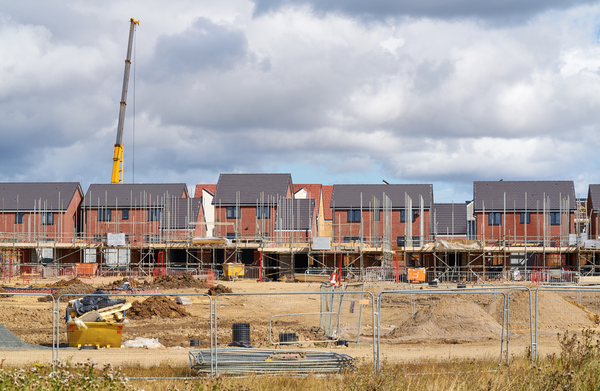You are viewing 1 of your 1 free articles
Potential delivery
Beyond the Autumn Statement, housing associations have the potential to more than double their output, says Susan Emmett
If ever there was any doubt about where housing stands on the political agenda, last week’s Autumn Statement removed it. With almost a third of the new £23bn National Productivity Investment Fund targeted at increasing the delivery of new homes, housing not only comes top of the list but is seen as a key to strengthening the economy ahead of Brexit.
The package also includes an additional £1.4bn of grant funding to support 40,000 new affordable rented homes by 2021 and a more flexible use of existing funding for affordable housing.
This noticeable shift in policy towards a wider range of tenure is good news for housing associations but is not a game changer. There is potential for housing associations to do far more and our latest research paper, Releasing Untapped Potential for More Housing, outlines what is needed.
Our analysis of the financial reports of more than 175 of the largest associations suggests that the sector could bring forward an additional 44,000 new homes a year by 2029, through additional asset-backed borrowing.
Based on current rates of delivery, this approach would increase the annual output from the sector up to 84,000 new homes in just over a decade, bringing it closer to the aspiration set by the National Housing Federation of delivering 120,000 in England homes by 2035.
“Some form of subsidy is critical to deliver these homes and to achieve affordability across a range of tenures.”
We calculate that the sector has £7.4bn of additional borrowing capacity that could be used to fund an aspirational development programme. These funds could be released by improving cash flow capacity through better management efficiency and reduced cash interest ratio to enable higher levels of gearing against existing assets.
This sum could be used to increase delivery by up to 44,000 additional homes a year in just over a decade as more housing associations get used to the idea of development. We calculate that in an average market in the south of England, these homes can be spread equally across market sale, shared ownership, market rent and affordable rent with 11,000 homes in each.
Some form of subsidy is critical to deliver these homes and to achieve affordability across a range of tenures. Delivering a mix of market and affordable housing both for sale and rent not only provides for the 70,000 new households a year that cannot afford market housing but also ensures that these new homes do not merely displace those that could be delivered by the private sector.
In the absence of greater levels of grant, the spread of tenure in our modelling relies on housing associations securing land at zero value for affordable rent or at minimal land value for shared ownership. This needs muscular planning policy and strong Section 106 agreements, based on a realistic growth-oriented approach to viability testing of policy.
Local authorities and their planning departments have a role to play. Targeted use of public land would help housing associations to secure land at zero or low value to deliver shared ownership or affordable rent housing. Local authorities would need to balance the objectives of generating receipts from surplus public land and providing affordable housing.
Planning flexibility will also help associations to make best use of one of their greatest competitive advantages – the ability to deliver a range of tenures and to react strategically to market cycles by increasing the delivery of homes for sale during a strong market and switching to rented housing during leaner times. This approach would require local planning authorities to take a more flexible approach on the timings of delivery of affordable housing by housing associations to reach the goal of higher overall housing delivery over the longer term.
Ultimately, we need to be more innovative. Our analysis shows that housing associations’ additional financial capacity is not evenly spread across the sector or the country.
Almost half of the additional financial capacity to deliver more housing rests with large scale voluntary transfer associations, particularly larger ones, managing 785,000 homes most of which are ex-local authority stock.
Making the most of this opportunity requires greater collaboration across the sector. This may involve more innovative partnerships as well as mergers.
Susan Emmett, director, Savills Residential Research











